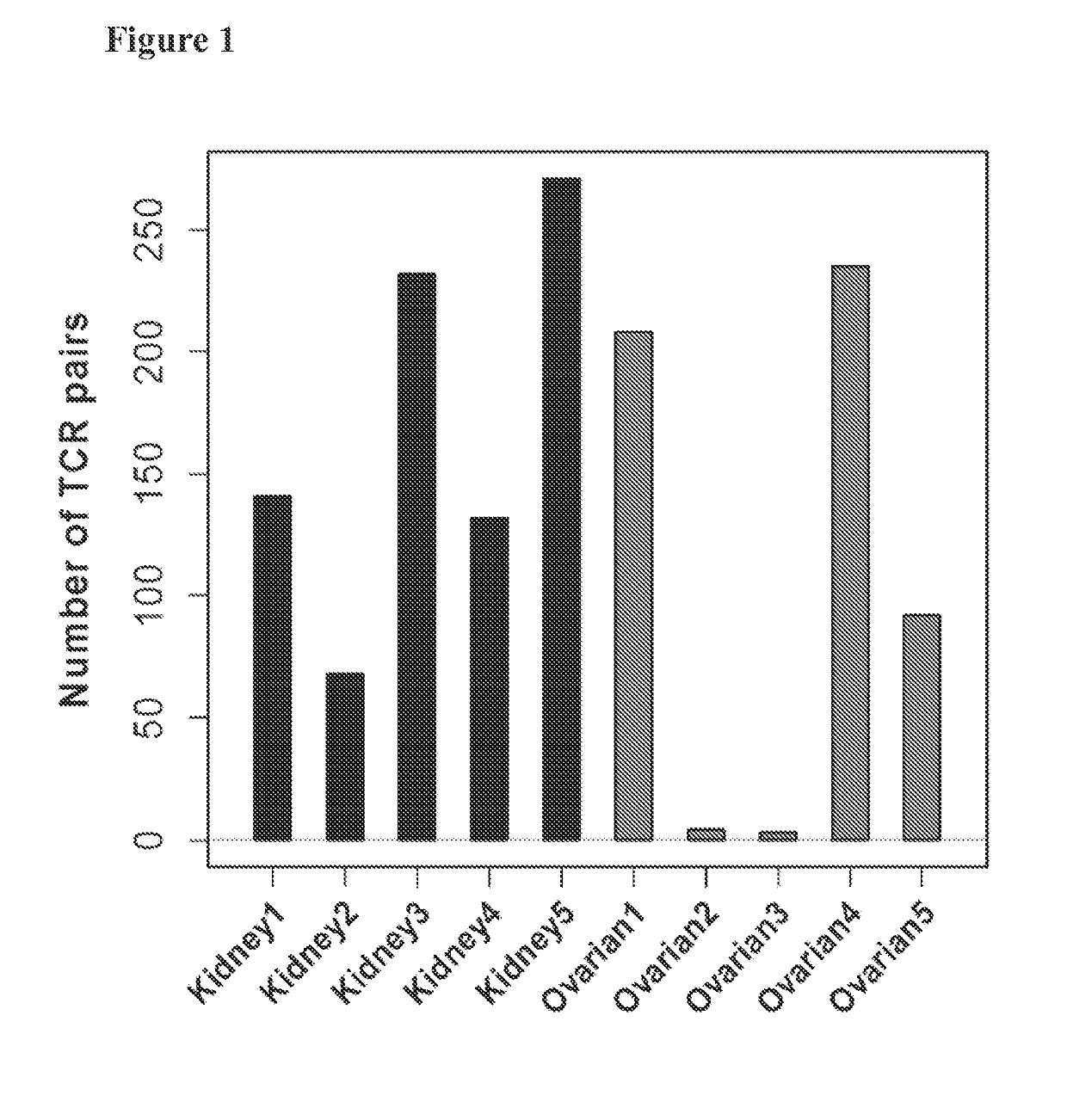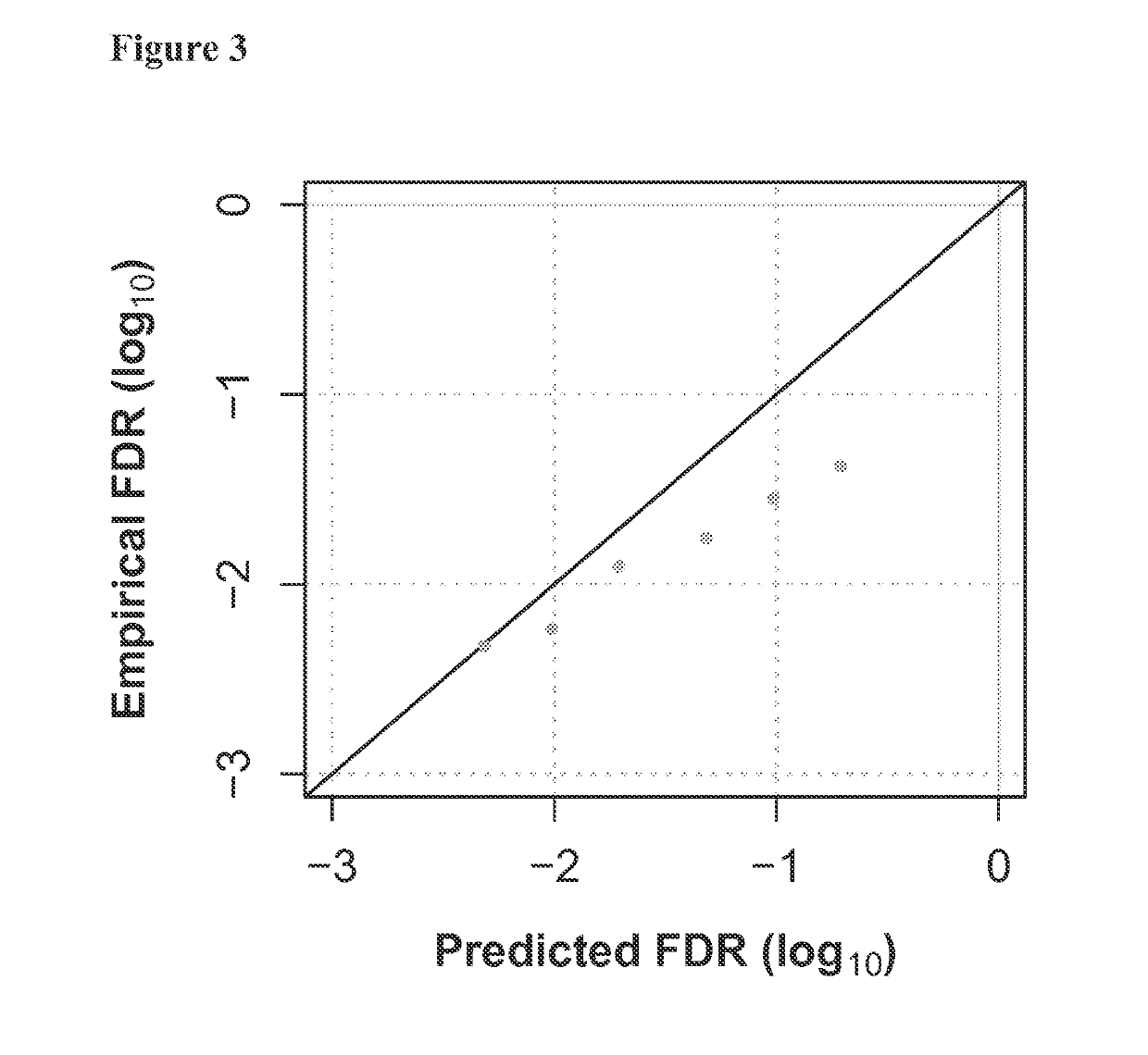Highly-multiplexed simultaneous detection of nucleic acids encoding paired adaptive immune receptor heterodimers from a large number of samples
a multi-layered, multi-functional technology, applied in the field of multi-functional nucleic acid amplification and highthroughput sequencing of adaptive immune receptor nucleic acid molecules, can solve the problems of inability to determine whether dna or rna encoding both chains of a tcr or ig heterodimer originated from the same lymphoid cell, and is still technically challenging and limited in throughpu
- Summary
- Abstract
- Description
- Claims
- Application Information
AI Technical Summary
Benefits of technology
Problems solved by technology
Method used
Image
Examples
example 1
t of Paired TRCA and TCRB Sequences to Tumor Samples of Origin
[0168]This example demonstrates proof-of-concept of one embodiment of the methods of the present invention. By way of non-limiting overview, the method of simultaneously assigning paired nucleic acids encoding immune receptor heterodimers includes the following steps:
[0169](a) Start with a plurality of biological samples, each sample including that lymphocytes with paired TCR or Ig receptor sequences of interest;
[0170](b) Mix equal volumes of aqueous solution including cells from each biological sample to generate a mixed sample of lymphocytes;
[0171](c) Perform high-throughput discovery of cognate antigen receptor TCR chain pairs or Ig heavy / light chain pairs for the mixed sample (“pairing,” for example, as described in Section 3 above);
[0172](d) for each individual biological sample, perform high-throughput sequencing of one chain of the pair (e.g., heavy chain alone), without pairing information (“single-locus sequencin...
example 2
t of Paired TRCA and TCRB Sequences to Tumor Samples of Origin
[0178]This example provides validation for an approach for multiplexing samples on a multi-well plate, wherein a pairing experiment to pair TCRs from 18 tumor samples was conducted in parallel.
[0179]The TCRA and TCRB repertoire of each tumor sample was first sequenced, and the frequency of each clone and the number of T cells in each sample of the repertoire was estimated. This information was then used to determine the optimal number of input cells to obtain from each tumor to capture the most common clones in a pairing experiment. The indicated amounts of input material from all 18 tumors were mixed, the cells were distributed across three 96-well plates (technical replicates), and a pairing assay was conducted on each plate.
[0180]With multiplexed experiments that include samples with known TCRA and TCRB repertoires, it is possible to directly measure the false discovery rate (FDR) by counting “cross-sample pairs”—i.e.,...
PUM
| Property | Measurement | Unit |
|---|---|---|
| mass | aaaaa | aaaaa |
| pH | aaaaa | aaaaa |
| temperature | aaaaa | aaaaa |
Abstract
Description
Claims
Application Information
 Login to View More
Login to View More - R&D
- Intellectual Property
- Life Sciences
- Materials
- Tech Scout
- Unparalleled Data Quality
- Higher Quality Content
- 60% Fewer Hallucinations
Browse by: Latest US Patents, China's latest patents, Technical Efficacy Thesaurus, Application Domain, Technology Topic, Popular Technical Reports.
© 2025 PatSnap. All rights reserved.Legal|Privacy policy|Modern Slavery Act Transparency Statement|Sitemap|About US| Contact US: help@patsnap.com



